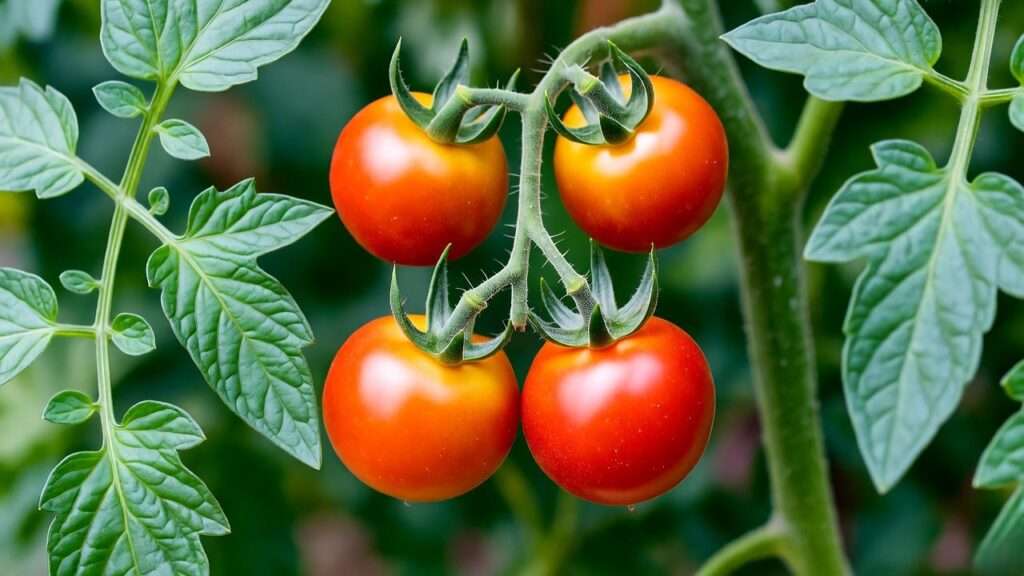Imagine sinking your teeth into a sun-warmed heirloom tomato, its vibrant colors—deep purples, bright yellows, or striped greens—bursting with flavor that supermarket tomatoes can only dream of. Growing heirloom tomato plants is a rewarding journey, but their unique needs can make it challenging without the right know-how. As a plant care specialist with over a decade of experience nurturing heirlooms across diverse climates, I’m here to share seven expert secrets to help you cultivate thriving heirloom tomato plants. Whether you’re a beginner or a seasoned gardener, these tips will ensure a bountiful harvest of delicious, history-rich tomatoes. Let’s dive into the art and science of growing heirlooms! 🌿
Why Choose Heirloom Tomato Plants? 🍅
The Unique Appeal of Heirlooms
Heirloom tomato plants are open-pollinated, non-hybrid varieties passed down through generations, often for over 50 years. Unlike commercial hybrids, heirlooms offer unmatched flavor profiles—think sweet, tangy, or even smoky notes—and come in a dazzling array of colors and shapes. Varieties like Brandywine, Cherokee Purple, and Green Zebra bring biodiversity to your garden and a story to your plate. Growing heirlooms connects you to agricultural history, preserving rare seeds for future generations. 🌼
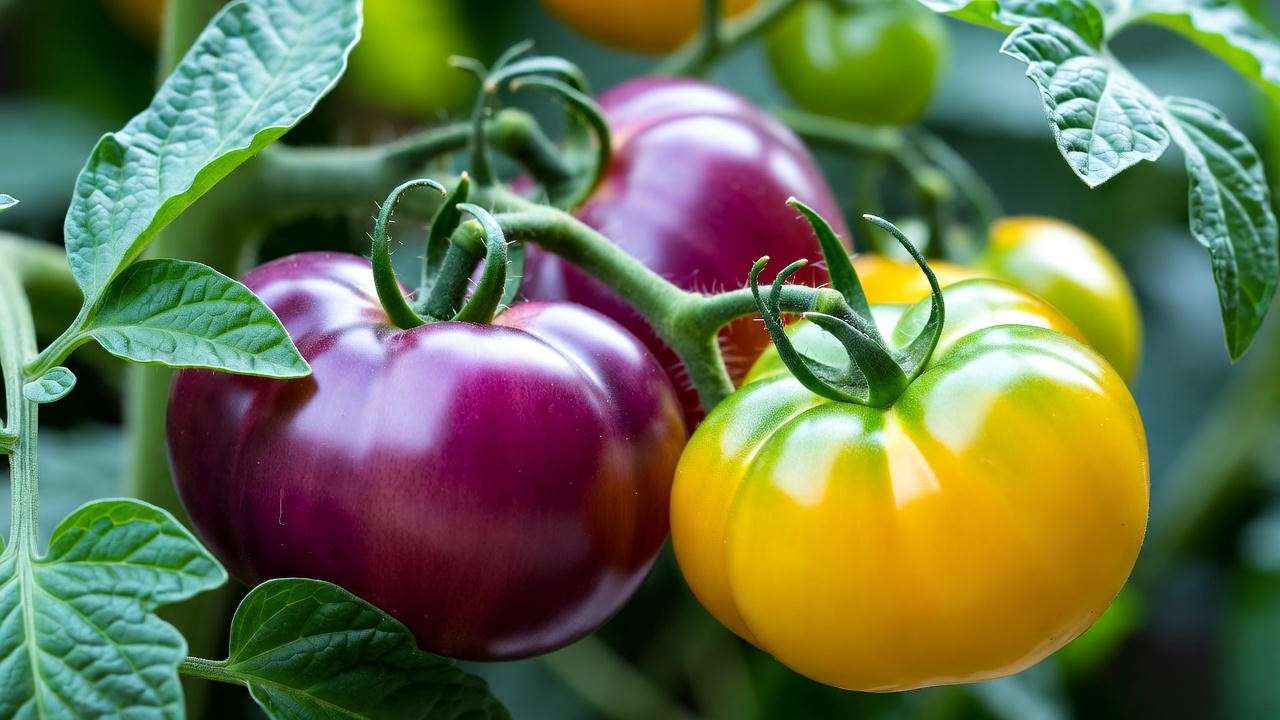
Challenges of Growing Heirloom Tomatoes
Heirlooms are less resistant to pests and diseases than hybrids, and their yields can be less predictable. They may require more attention to soil, watering, and pruning. But the reward? A tomato that tastes like summer itself, with textures and flavors that elevate any dish. With the right strategies, these challenges become opportunities to hone your gardening skills. 🌞
Secret #1: Choosing the Right Heirloom Varieties 🌿
Selecting the perfect heirloom tomato variety is the foundation of a successful harvest. Your choice should align with your climate, garden space, and flavor preferences. For example, Brandywine thrives in warm climates and offers sweet, juicy fruits, while Black Krim is more forgiving in cooler regions. Green Zebra delivers a tangy kick, ideal for salads. Consider your USDA hardiness zone—zones 5-9 are ideal for most heirlooms—and available space, as some varieties grow tall and sprawling.
| Variety | Flavor Profile | Size | Growing Season | Difficulty |
|---|---|---|---|---|
| Brandywine | Sweet, rich | Large | 80-90 days | Moderate |
| Cherokee Purple | Smoky, complex | Medium-Large | 75-85 days | Easy |
| Green Zebra | Tangy, zesty | Small-Medium | 70-80 days | Easy |
| San Marzano | Sweet, low acidity | Medium | 80-90 days | Moderate |
Expert Tip: Check your local extension service for region-specific recommendations. For example, in my Zone 7 garden, I’ve had great success with Cherokee Purple for its disease resistance and flavor. 🌱
Secret #2: Starting with Healthy Seeds or Seedlings 🌱
Sourcing Quality Seeds
The journey to vibrant heirloom tomato plants starts with high-quality seeds. Purchase from reputable sources like Seed Savers Exchange or local organic nurseries to ensure non-GMO, open-pollinated seeds. Saving seeds from your own harvest is also a rewarding option—select the healthiest, ripest fruits for the best genetic material. Store seeds in a cool, dry place to maintain viability.
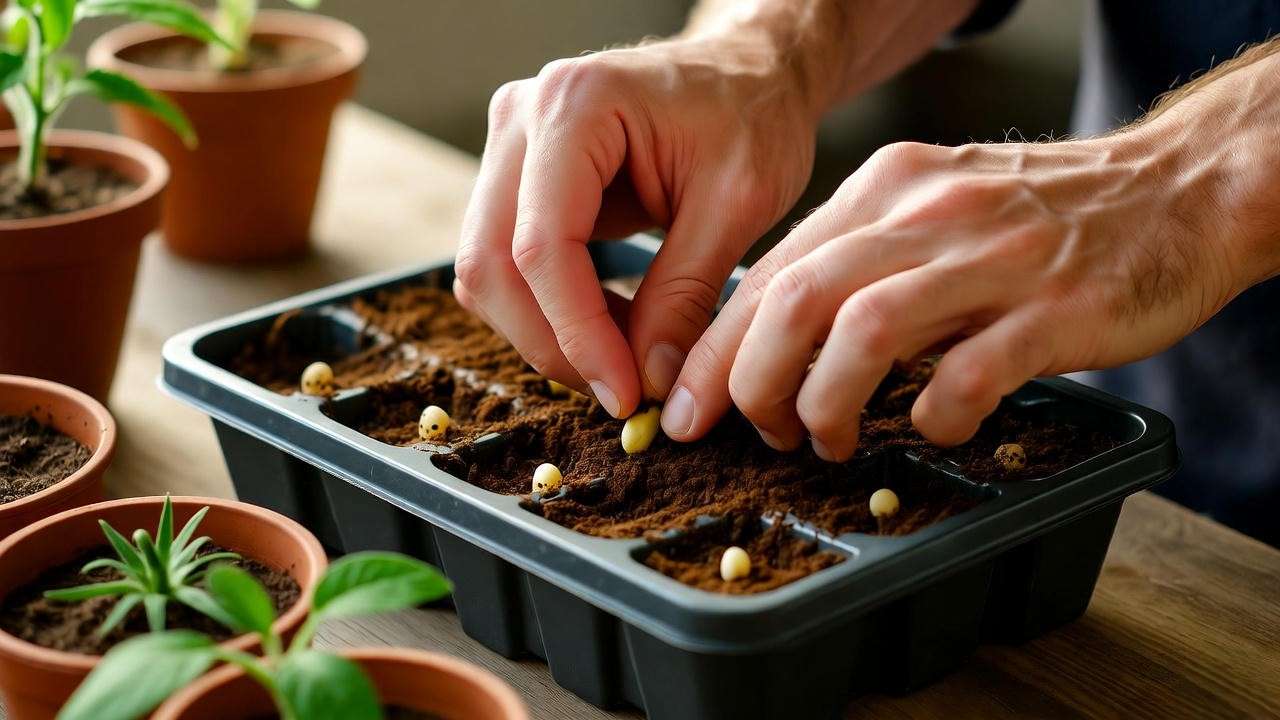
Starting Seeds Indoors
Start seeds indoors 6-8 weeks before your last frost date. Use a seed-starting mix with good drainage, and plant seeds ¼ inch deep in trays. Maintain a soil temperature of 75-80°F using a heat mat, and provide 14-16 hours of light daily with grow lights or a sunny windowsill. Water gently to keep soil moist but not soggy. Common mistakes include overwatering or insufficient light, which can lead to leggy seedlings.
Selecting Strong Seedlings
If buying seedlings, choose plants with sturdy stems, vibrant green leaves, and no yellowing or wilting. Avoid seedlings with flowers or fruit, as they may struggle during transplanting. Harden off seedlings by gradually exposing them to outdoor conditions over 7-10 days, starting with a few hours of shade and increasing sunlight daily. This prevents transplant shock and sets your plants up for success. 🌼
Secret #3: Preparing the Perfect Soil 🏡
Heirloom tomato plants thrive in well-draining, nutrient-rich soil with a pH of 6.0-6.8. Test your soil with a kit (available at garden centers) to check pH and nutrient levels. Amend with organic matter like compost or aged manure to boost fertility. A balanced fertilizer (e.g., 10-10-10 or organic fish emulsion) provides essential nutrients like nitrogen, phosphorus, and potassium.
DIY Compost Recipe:
- Mix 50% brown materials (dry leaves, straw) with 50% green materials (grass clippings, vegetable scraps).
- Turn weekly and keep moist like a wrung-out sponge.
- Use after 2-3 months when dark and crumbly.
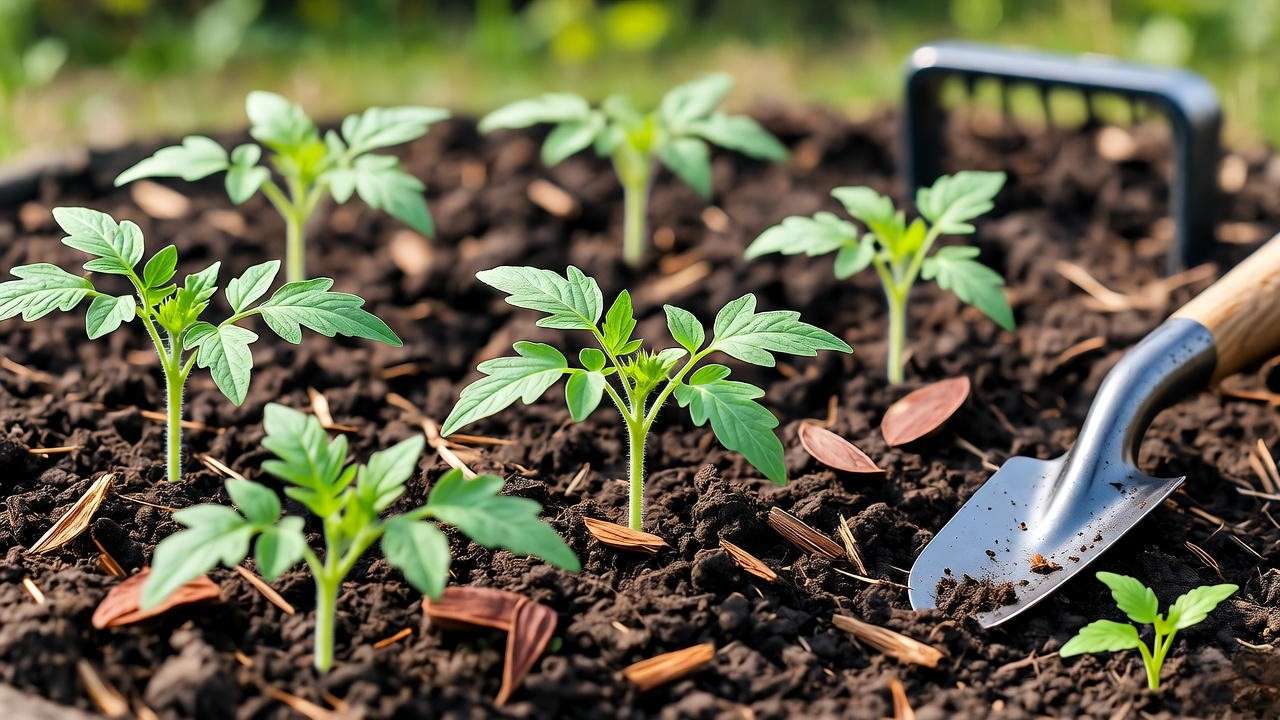
Expert Insight: In my garden, I add crushed eggshells to the soil to provide calcium, reducing the risk of blossom end rot. Test and amend soil annually for consistent results. 🌿
Secret #4: Mastering Watering and Mulching Techniques 💧
Watering Heirloom Tomatoes
Deep, infrequent watering encourages strong root systems. Water at the base, not overhead, to keep foliage dry and reduce disease risk. Aim for 1-2 inches of water per week, adjusting for rainfall. Use a soaker hose or drip irrigation for consistent moisture. Overwatering can cause root rot, while underwatering leads to cracked fruits or wilting. Check soil moisture by inserting a finger 2 inches deep—if dry, it’s time to water.
Mulching for Success
Mulch retains moisture, suppresses weeds, and regulates soil temperature. Organic options like straw, wood chips, or pesticide-free grass clippings work best. Apply a 2-4 inch layer around plants, leaving a 2-inch gap around stems to prevent rot. Mulch also reduces soil splash, which can spread diseases like early blight.
Pro Tip: Refresh mulch mid-season to maintain its benefits. In my experience, straw mulch has been a game-changer for keeping soil consistently moist during hot summers. 🌞
Secret #5: Providing Proper Support and Pruning ✂️
Staking and Caging Heirloom Tomatoes
Heirloom tomato plants often grow tall and heavy, with some varieties reaching 6-8 feet. Without proper support, stems can snap, and fruits may rot on the ground. Choose a support system based on your garden setup and variety:
- Tomato Cages: Ideal for bushy, determinate heirlooms like San Marzano. Use sturdy, wide cages (at least 18 inches in diameter) to accommodate vigorous growth.
- Stakes: Best for indeterminate varieties like Brandywine. Drive a 6-8 foot wooden or metal stake 12 inches into the ground, 2-3 inches from the plant’s base. Tie the main stem to the stake with soft twine, adding ties every 10-12 inches as the plant grows.
- Trellises: Great for small spaces. Train vines along a vertical or A-frame trellis for easy access and air circulation.
Step-by-Step Staking Guide:
- Install the stake at planting to avoid root damage.
- Tie the stem loosely to allow growth, using figure-eight knots.
- Check ties weekly and adjust as the plant grows.
Expert Insight: In my Zone 7 garden, I use heavy-duty cages for Cherokee Purple, as their sprawling growth needs extra support. This prevents fruit loss and keeps plants healthy. 🌱
Pruning for Productivity
Pruning heirloom tomato plants improves air circulation, reduces disease risk, and directs energy to fruit production. Focus on removing suckers—small shoots that grow in the crotch between the main stem and branches—and lower leaves touching the soil.
How to Prune:
- Identify suckers: Look for shoots between the main stem and branches.
- Pinch off suckers under 2 inches long with your fingers or use clean shears for larger ones.
- Remove lower leaves (up to 12 inches from the ground) to prevent soil-borne diseases.
- Prune sparingly on determinate varieties to avoid reducing yield.
Visual Tip: Imagine your plant as a tree with an open canopy—prune to maintain airflow and sunlight exposure. Over-pruning can stress plants, so aim for balance. In my experience, pruning suckers weekly during peak growth keeps heirlooms productive and disease-free. ✂️
Secret #6: Protecting Against Pests and Diseases 🐞
Common Heirloom Tomato Pests
Heirloom tomato plants are more susceptible to pests than hybrids, but organic methods can keep them at bay. Common culprits include:
- Aphids: Tiny sap-sucking insects that cluster on new growth. Control with a strong water spray or insecticidal soap.
- Tomato Hornworms: Large green caterpillars that devour leaves and fruit. Hand-pick and drop into soapy water, or introduce beneficial insects like parasitic wasps.
- Whiteflies: Small white insects that weaken plants. Use yellow sticky traps or neem oil sprays.
Prevention Tips:
- Plant companion plants like marigolds or basil to repel pests naturally.
- Inspect plants weekly, especially under leaves, for early signs of infestation.
- Rotate crops annually to disrupt pest life cycles.
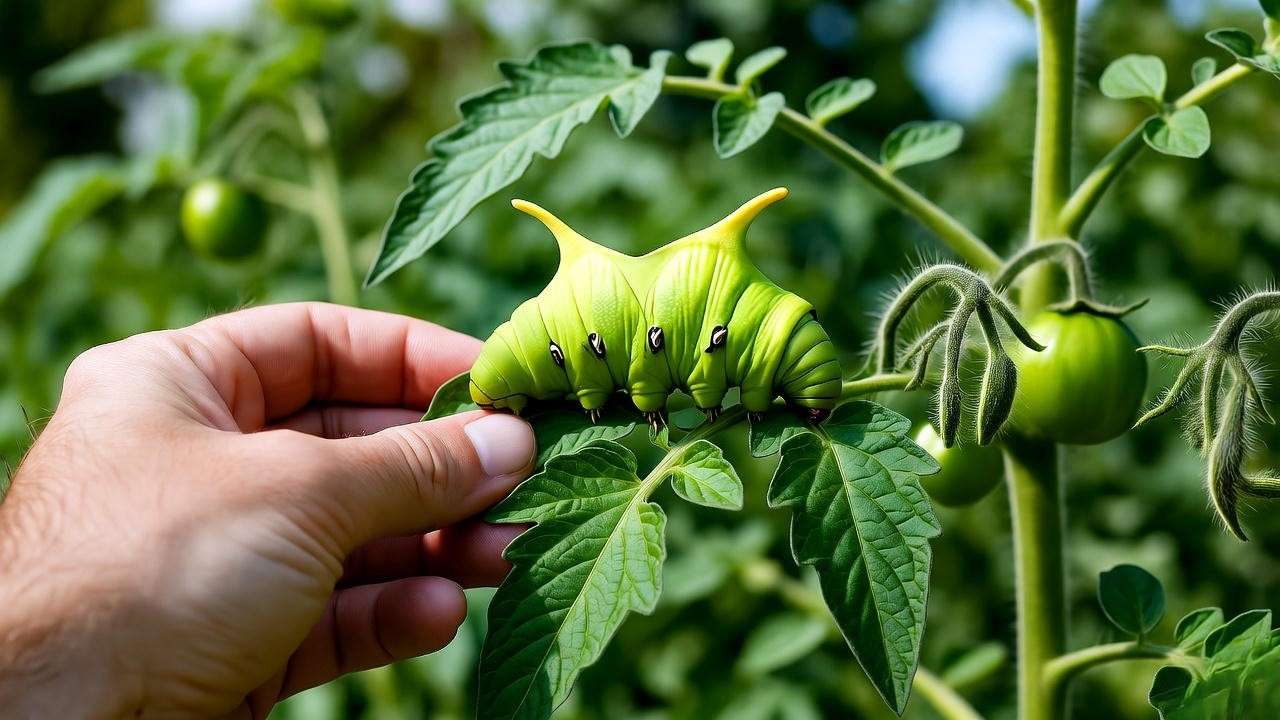
Managing Diseases
Heirlooms are prone to diseases like early blight, late blight, and blossom end rot. Here’s how to manage them:
- Early Blight: Fungal disease causing dark spots on leaves. Remove affected leaves, improve air circulation, and apply an organic copper-based fungicide.
- Late Blight: A more severe fungus causing grayish-green patches. Destroy affected plants and avoid overhead watering.
- Blossom End Rot: Dark, sunken spots on fruit bottoms due to calcium deficiency. Ensure consistent watering and add calcium (e.g., crushed eggshells or gypsum) to soil.
Expert Insight: In my garden, I prevent blight by spacing plants 24-36 inches apart and mulching heavily. Early detection is key—check leaves daily during humid weather. A homemade baking soda spray (1 tsp per quart of water) can help control fungal issues if applied early. 🌿
Secret #7: Harvesting and Enjoying Your Heirloom Tomatoes 🍴
Harvest heirloom tomatoes at peak ripeness for the best flavor—when fruits are fully colored and slightly soft to the touch. For example, Cherokee Purple should be deep purple with a slight give, while Green Zebra remains green with yellow stripes. Use scissors to cut fruits from the vine, leaving a small stem to prevent rot.
Storage Tips:
- Store at room temperature (never refrigerate) to preserve flavor, and use within 3-5 days.
- For excess harvests, can or freeze tomatoes. Try making heirloom tomato salsa or sauce to capture their unique flavors.
- To save seeds, scoop out the pulp, ferment in water for 2-3 days, rinse, and dry thoroughly before storing.
Recipe Idea: Heirloom Tomato Caprese Salad:
- Slice Brandywine or Cherokee Purple tomatoes.
- Layer with fresh mozzarella, basil leaves, and a drizzle of olive oil and balsamic vinegar.
- Sprinkle with sea salt and cracked pepper for a simple, flavor-packed dish.
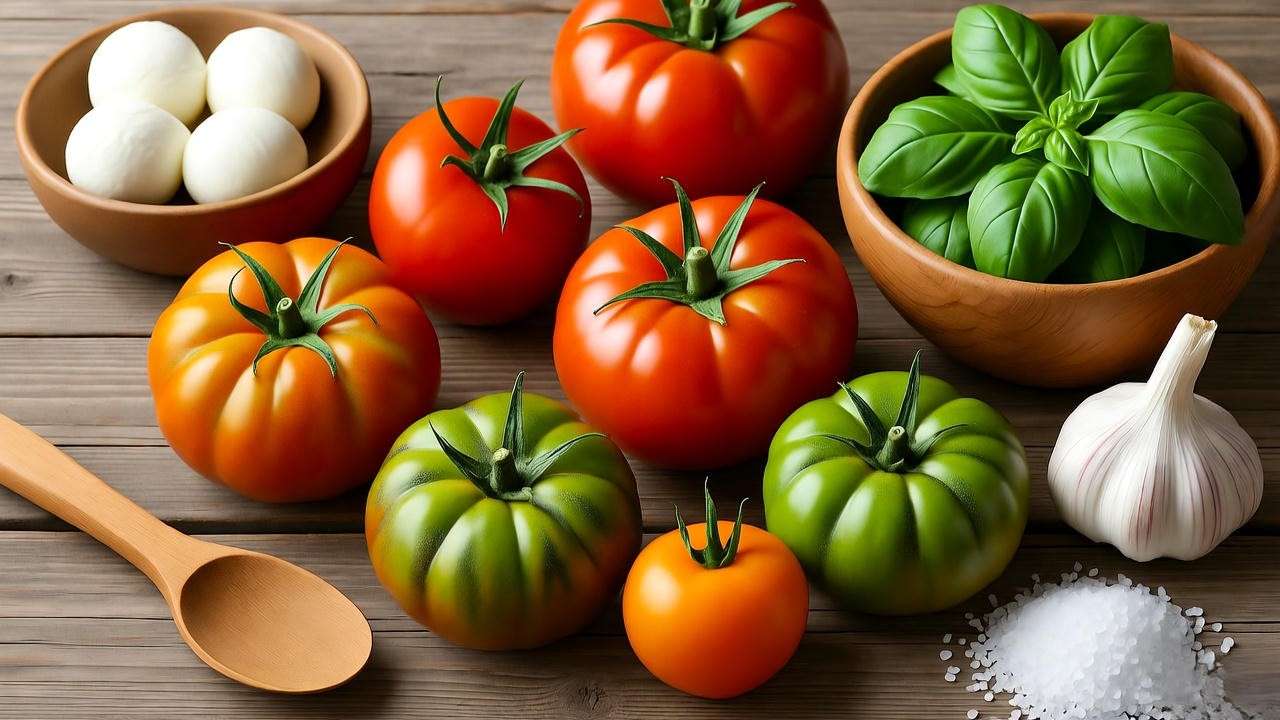
Pro Tip: Taste-test different varieties to discover your favorite. Last summer, I paired Green Zebra with fresh herbs for a zesty salsa that was a hit at family gatherings. 🍅
Bonus Tips for Heirloom Tomato Success 🌞
- Companion Planting: Grow basil, nasturtiums, or marigolds near tomatoes to repel pests and enhance growth. Basil also improves tomato flavor when planted nearby.
- Seasonal Care Calendar:
- Early Spring: Start seeds indoors; prepare soil.
- Late Spring: Transplant seedlings; install supports.
- Summer: Water consistently, prune, and monitor for pests.
- Fall: Harvest and save seeds for next season.
- Troubleshooting Guide:
- Yellowing Leaves: Check for overwatering or nutrient deficiency (add balanced fertilizer).
- Cracked Fruits: Inconsistent watering; maintain steady moisture with mulch.
- Stunted Growth: Test soil pH and ensure adequate sunlight (6-8 hours daily).
FAQs About Growing Heirloom Tomato Plants ❓
Why are my heirloom tomatoes splitting?
Splitting occurs due to inconsistent watering, causing rapid fruit expansion. Maintain steady moisture with drip irrigation and mulch.
Can I grow heirlooms in containers?
Yes! Choose compact varieties like San Marzano and use 5-gallon pots with drainage. Ensure consistent watering and support.
How long does it take for heirloom tomatoes to ripen?
Most heirlooms ripen in 70-90 days from transplanting, depending on the variety and climate.
What’s the best fertilizer for heirloom tomato plants?
Use a balanced organic fertilizer (e.g., 5-5-5) or compost tea every 2-3 weeks during the growing season.
How do I prevent blossom end rot naturally?
Add calcium-rich amendments (e.g., eggshells) to soil and water consistently to avoid fluctuations.
Conclusion: Grow Your Best Heirloom Tomatoes Yet! 🎉
With these seven secrets, you’re equipped to grow vibrant, productive heirloom tomato plants that yield a bountiful harvest of flavorful fruits. From choosing the right varieties to mastering pruning and pest control, each step builds on decades of gardening wisdom and my own experience cultivating heirlooms in diverse climates. Start your heirloom journey today, and savor the joy of homegrown tomatoes that tell a story with every bite. Share your favorite heirloom variety or growing tip in the comments, or explore more plant care guides on our website! 🌱

